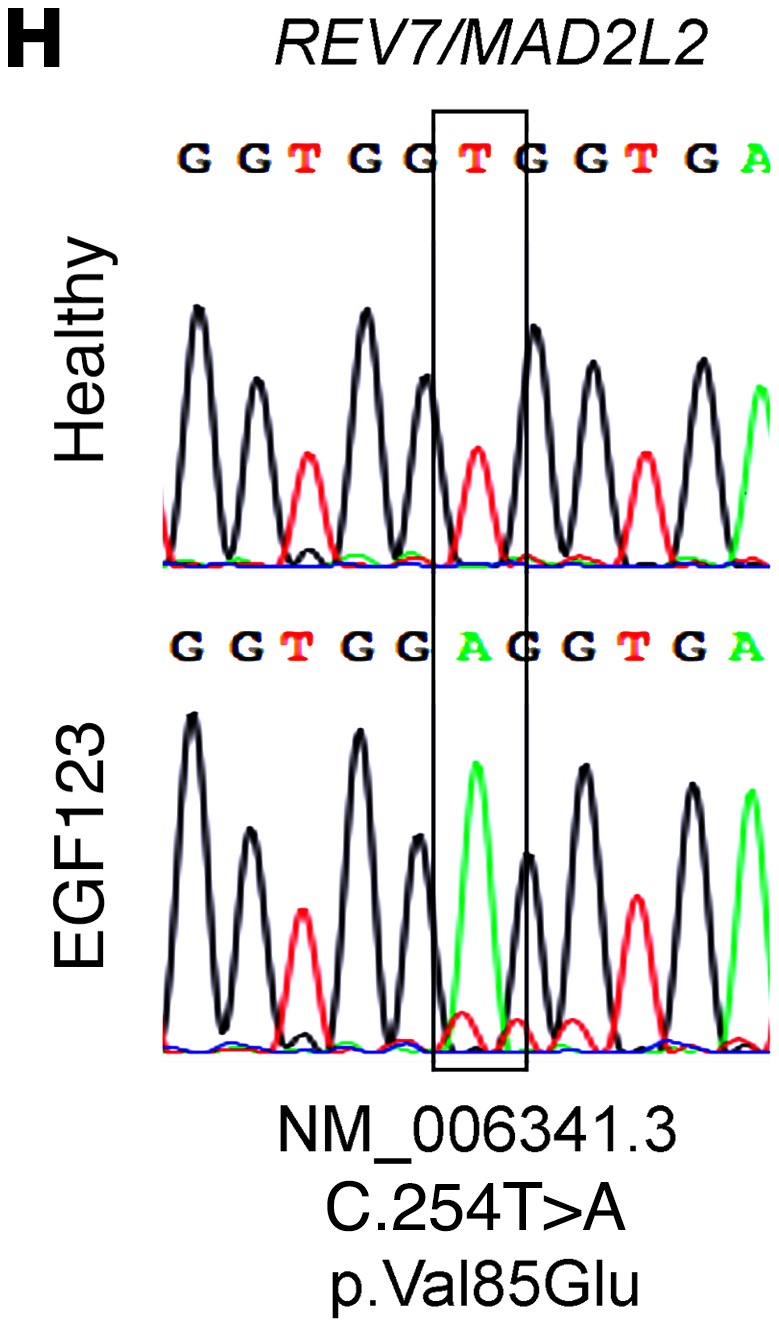Original citation: J Clin Invest. 2016;126(9):3580–3584. https://doi.org/10.1172/JCI88010
Citation for this corrigendum: J Clin Invest. 2017;127(3):1117. https://doi.org/10.1172/JCI92946
The nomenclature for the REV7 mutation was incorrectly noted in two sentences in the second paragraph of Results and Discussion and in Figure 1H. The correct sentences and figure part are below.

Whole exome sequencing (WES) on genomic DNA from the EGF123 proband identified a homozygous REV7 variant, c.254T>A.
The c.254T>A REV7 is a variant based on a survey of publicly accessible variant databases.
In addition, the fourth sentence of the Abstract was incorrect. The correct sentence is below.
Patient-derived cells demonstrated an extended FA phenotype, which included increased chromosome breaks and G2/M accumulation upon exposure to DNA crosslinking agents, γH2AX and 53BP1 foci accumulation, and enhanced p53/p21 activation relative to cells derived from healthy subjects.
The authors regret the errors.
Footnotes
See the related article at Biallelic inactivation of REV7 is associated with Fanconi anemia.


